I often hear people bemoan the musky scent of marigolds.
Sometimes when I’m plucking a basketful of their dense, cheerful blooms I can almost understand. Every breath I take feels thick with their earthy perfume and I can feel every particle of pollen adhering to my nasal passages like iron filings to a magnet.
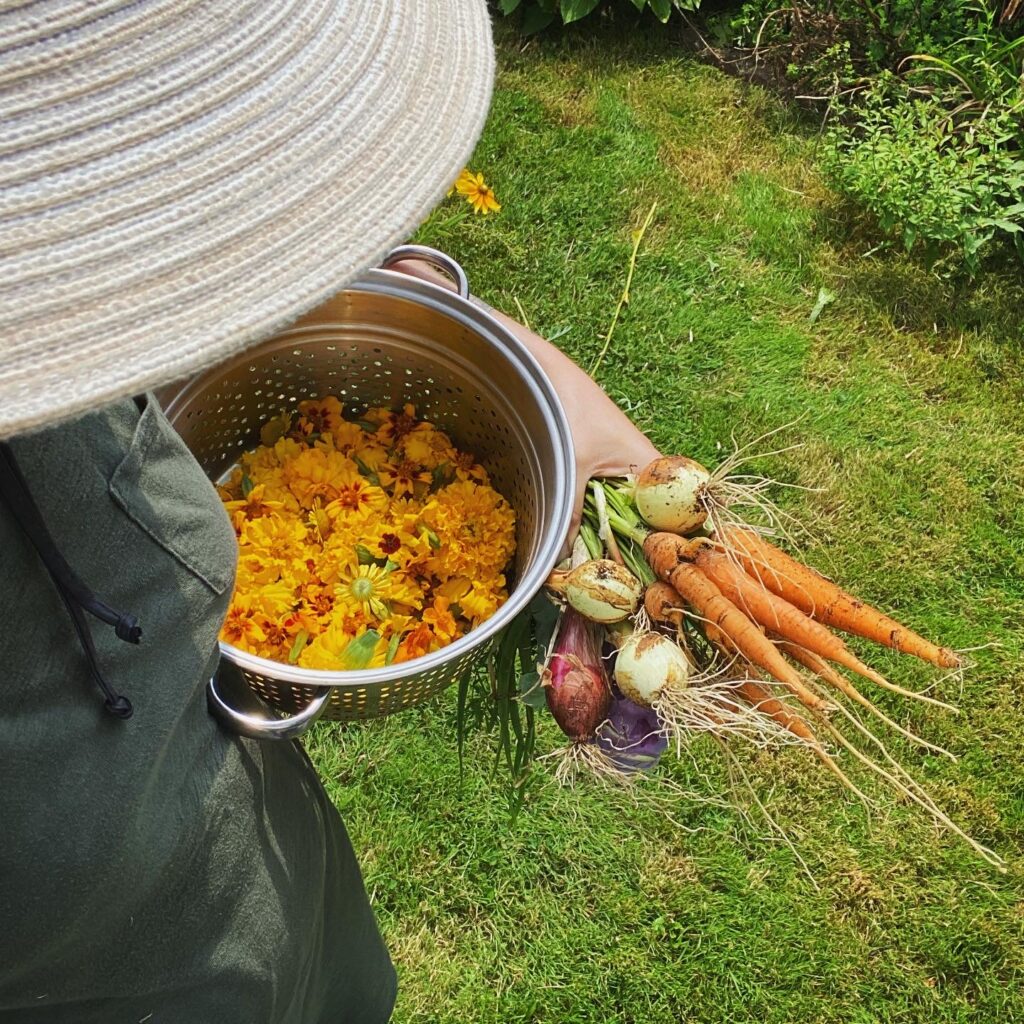
I can’t join the marigold haters club however, because not only have marigolds adorned many of my warm memories of youth, they’re the first flower that I ever used to learn how to naturally dye wool.
Feeling deliciously witchy on a hot summer afternoon, I brewed that first vat of dyestuff from a basket of bedraggled blossoms. As I lowered a hank of handspun wool into the amber-colored water, the world of gardening opened up again, revealing another layer of this connection to plants that I have felt since I was a child.

With every skill I learn, every book I read, and every new plant I meet, the excitement renews. I’m a kid again, squatting in front of my mother’s marigolds without a care in the world.
I will never get tired of this, I think.
How to Prepare and Dye Wool with Marigolds
To dye wool with marigolds (or coreopsis, or dyer’s chamomile- which I often blended together) you’ll need at least a pint of blooms. You can pluck them as they’re passing their prime and either steep them into dye immediately or freeze them for later. I even had good results after leaving that first basket of flowers to languish on the porch for a day before steeping them.
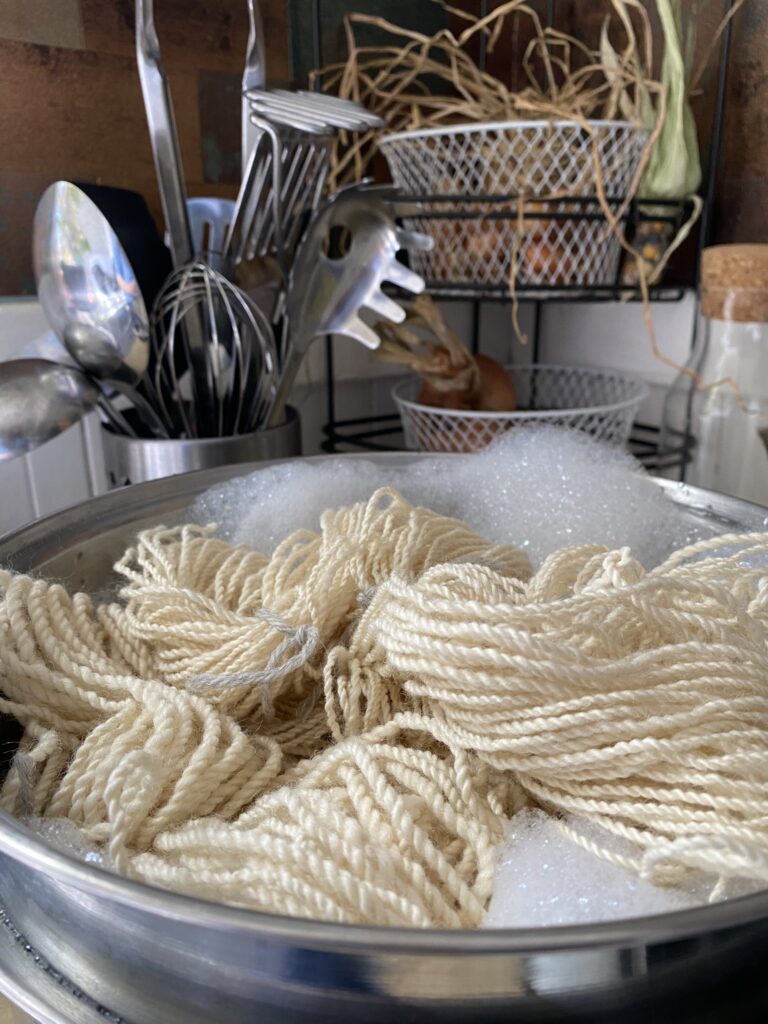
Wool (as well as silk) are readied for dye in a process called mordanting. The word mordant comes from the Latin word “modere” which means “to bite”. Essentially you’re using a mordant to rough up the fibers and give them some “bite” to grab onto the pigment. An easy mordant to start with is alum combined with cream of tartar.
Some mordant examples (Measurements taken from The Weaver’s Garden)
Using 4 gallons of water for each 1 pound of wool, choose one of the following mordants
- 4 tbsp alum + 4 tsp of cream of tartar
- 1tbsp chrome
- 2 tbsp copper
- 2 tbsp iron
- 2 tsp tin
Silk uses the same mordant, but in smaller amounts. Cotton can be dyed without mordant, but is usually pre washed with washing soda to prepare the fibers to take up pigment better.
From there, the mordanted wool can either be rinsed and dried for later dyeing or put straight into a prepared dye bath where it’s heated to a simmer and then left to cool in the pot. It’s important to never stir or rapidly warm/cool wool during these processes, as it is prone to felting. Drop it in the pot, then leave it be!
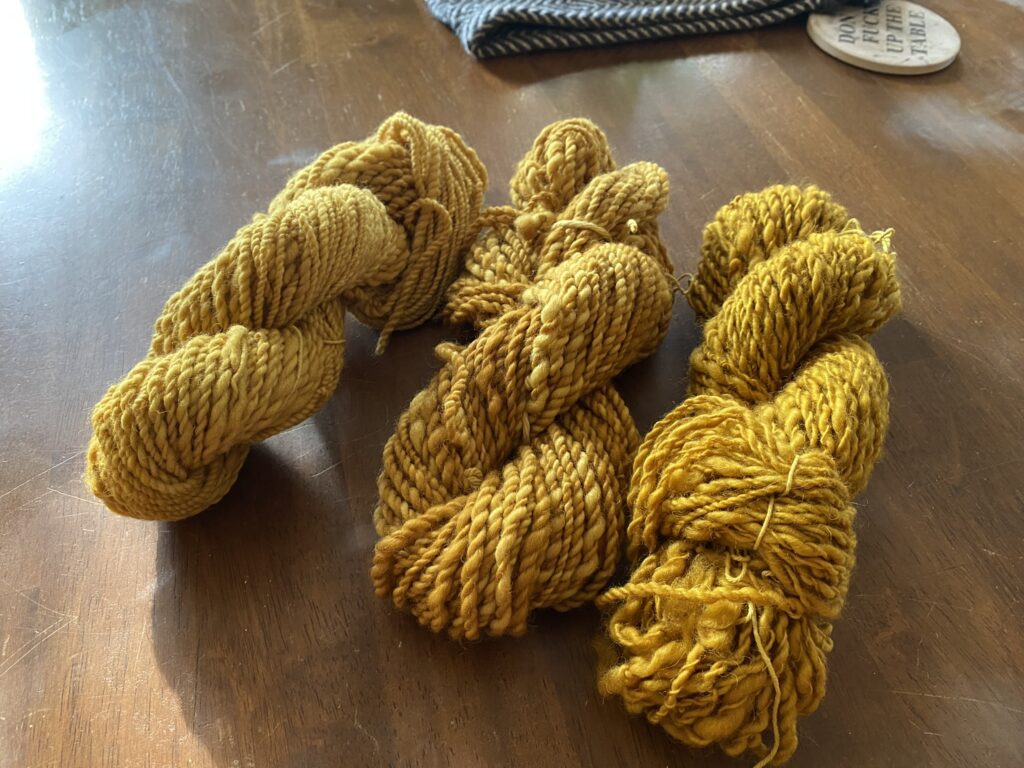
Making dye baths would become a weekly activity after that first pot, and I quickly dyed my way through all of my shoddily spun hanks of yarn, working from the worst to my more skilled attempts. By the end of fall, my cheerful marigolds had mildewed and my freezer was stuffed with frozen blooms for a future midwinter dye pot. I made a knitted basket out of that first hank which I still beam at every day. If you’re not a spinner, you can buy undyed yarn very affordably here.
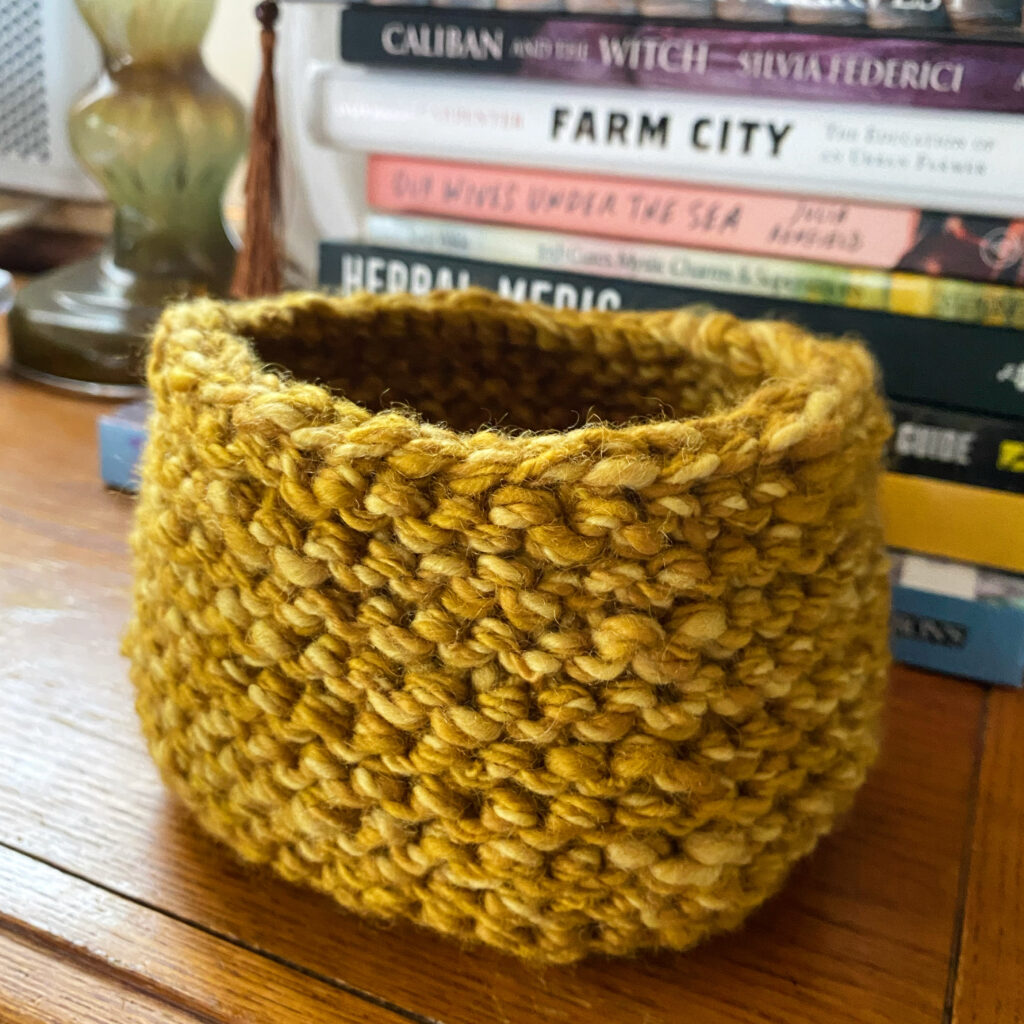
Growing a Dyer’s Garden at Home
This year’s dye garden will be more robust with options and I have been accumulating supplies to try other methods of using flower and plant pigments. Here’s a list of seeds I intend to plant for the 2024 season:
- Marigold
- Dyer’s Coreopsis
- Tango Cosmos
- Dahlia
- Zinnia
- Greenthread
- Blue Butterfly Pea
- Black Knight Scabiosa
- Hollyhock (biennial)
- Hopi Black Dye Sunflower
- Purple basil (great for flower pounding)
- Indigo
- Japanese Indigo
- Madder
- Woad
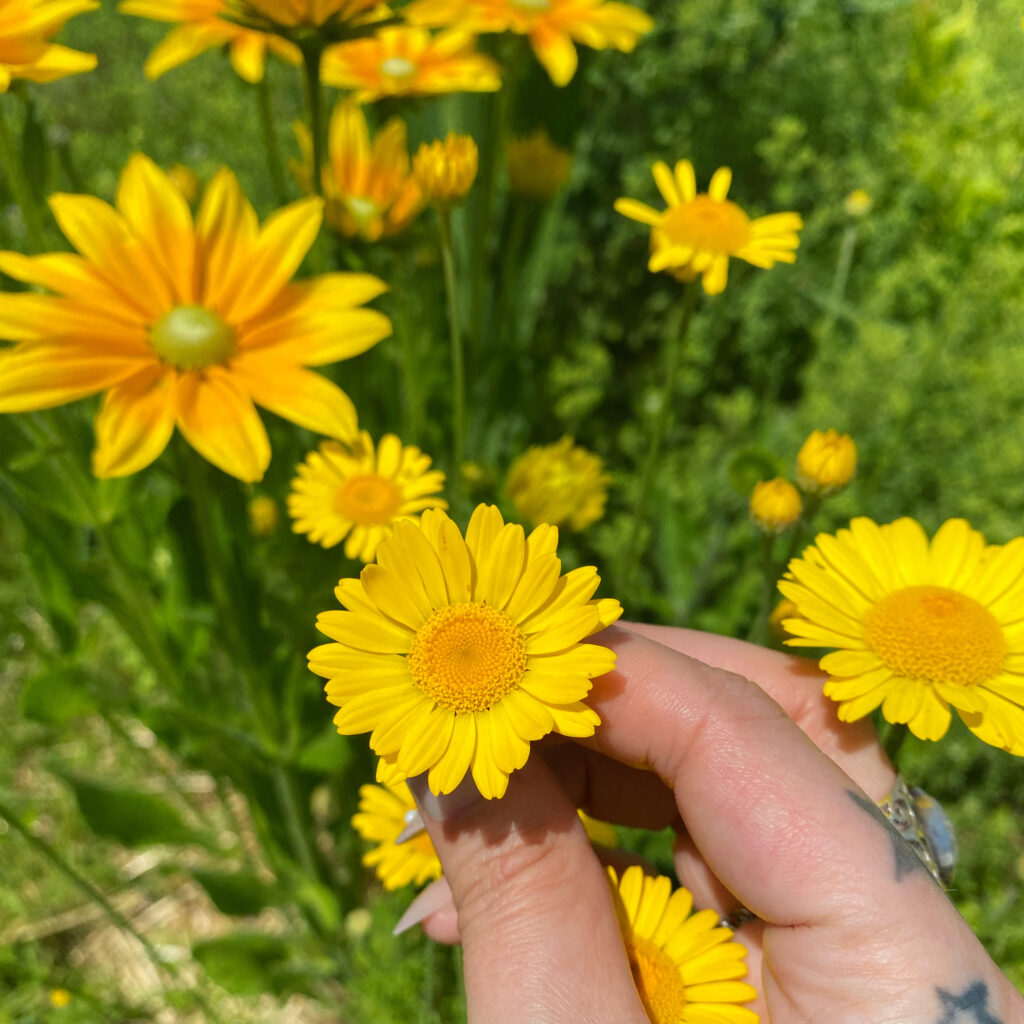
My favorite seed company for easy dye plant shopping and information is Grand Prismatic Seeds, but you can find many of these seeds elsewhere if they’re out of stock.
Follow my YouTube Channel and Instagram to see more of my dye tutorials and experiments!
(This post contains some affiliate links for your convenience, these provide me with a small commission if you choose to purchase through them at no additional cost to you.)